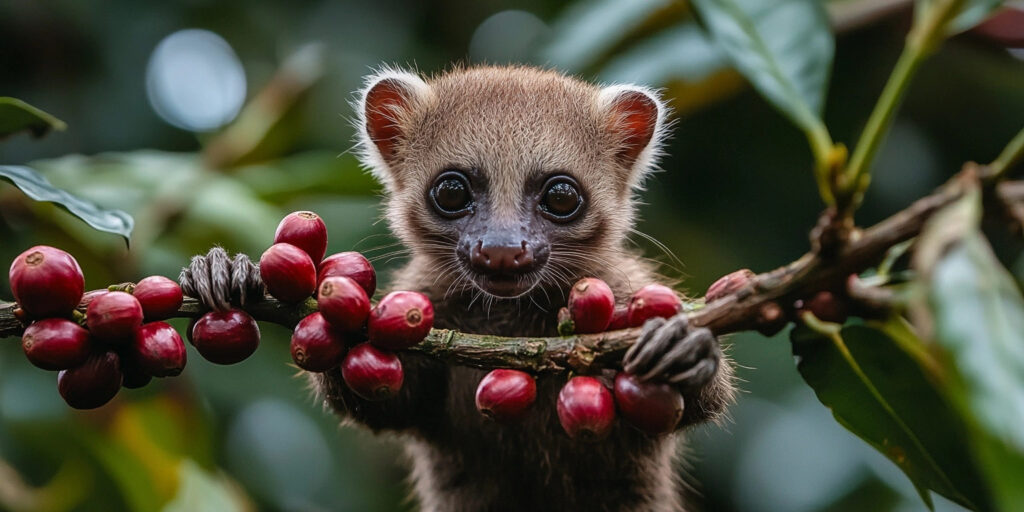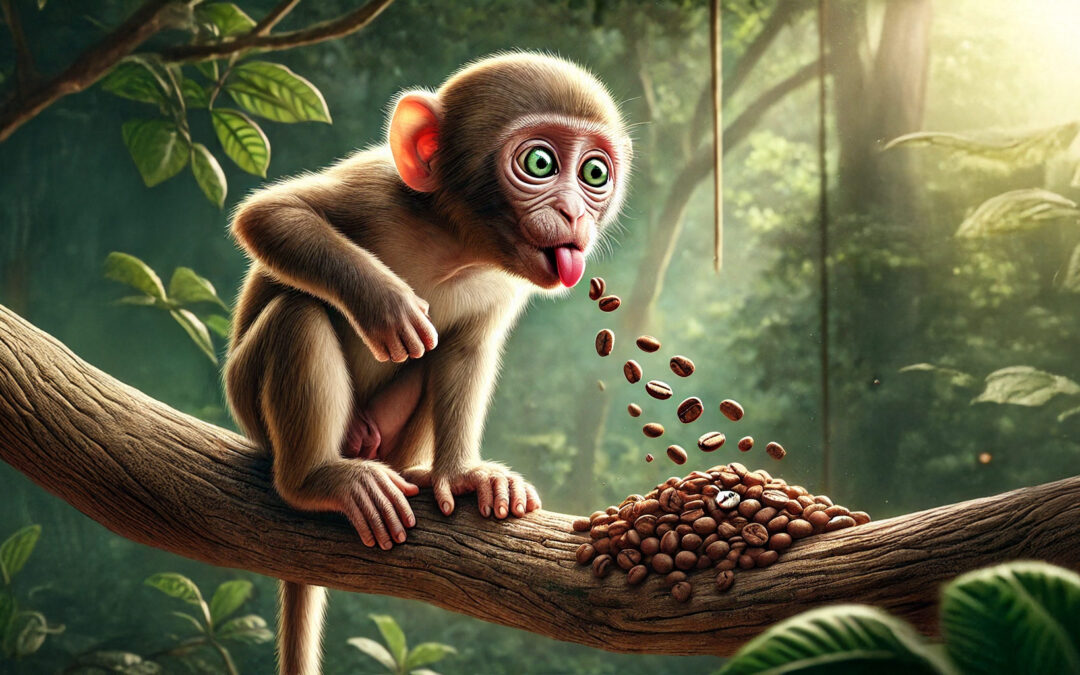What Is Monkey Poo Coffee?
To clarify, Monkey Poo Coffee doesn’t involve monkeys at all—it’s all about civets, small nocturnal mammals native to Southeast Asia. These civets consume ripe coffee cherries, and through their digestive process, the beans are transformed. After the civets excrete the partially digested beans, farmers collect, clean, and roast them to create this distinctive coffee.
The fermentation process within the civet’s stomach alters the beans’ composition, reducing acidity and creating a smoother, richer flavor profile. This unusual process is why Kopi Luwak is revered as one of the world’s most exclusive coffees.
Is It Related to Monkey Spit Coffee?
Despite the nickname, Monkey Poo Coffee and Monkey Spit Coffee are completely unrelated. Monkey Spit Coffee is a less famous brew made from beans that monkeys pick and chew on before spitting them out. While the processes are different, both methods capitalize on the idea that animals can enhance the flavor of coffee in unique ways. However, Kopi Luwak has far outshined its “spitty” cousin in terms of popularity and luxury status.
Why Is Kopi Luwak So Expensive?
There are a few key reasons for the exorbitant price tag attached to Kopi Luwak:
- Labor-Intensive Production: Collecting beans from the wild is a painstaking process. Farmers need to locate and harvest the beans after the civets have excreted them, which is both time-consuming and physically demanding.
- Limited Supply: Authentic wild-sourced Kopi Luwak is rare. Many civets live in natural habitats, and their limited production capacity means there’s only so much coffee available each year.
- High Demand: As a symbol of luxury, Kopi Luwak attracts coffee enthusiasts who are willing to pay a premium for its rarity and unique production story.
- Unique Flavor Profile: The fermentation process inside the civet’s digestive system creates a smoother, less acidic coffee, making it a highly sought-after treat for those who appreciate specialty brews.
How Was It Discovered?
The origins of Kopi Luwak trace back to colonial Indonesia during the Dutch East Indies period. Local farmers, forbidden by the Dutch to harvest coffee beans for their own use, noticed that civets often ate the cherries and left the beans intact in their droppings. Out of curiosity and resourcefulness, these farmers collected the beans, cleaned them thoroughly, and roasted them to create coffee. To their surprise, the resulting brew had an incredibly smooth and rich flavor.
Over time, this humble discovery evolved into an internationally recognized luxury coffee, now highly prized among connoisseurs.

From Digestive Quirk to Luxury Coffee Cup
Kopi Luwak is more than just a conversation starter—it’s a testament to how nature and human ingenuity intersect in surprising ways. While the idea of civet-processed coffee beans might raise eyebrows, the end result is a smooth, flavorful cup of coffee that has captured the attention of enthusiasts worldwide.
However, it’s worth noting that ethical concerns around animal welfare have surfaced in the industry, particularly regarding the treatment of civets in some farming practices. For those eager to try Kopi Luwak, opting for beans sourced from wild, free-roaming civets can ensure a more humane and sustainable experience.
In the end, sipping on this “Monkey Poo Coffee” is about much more than taste—it’s a journey through history, nature, and an enduring fascination with all things extraordinary.

